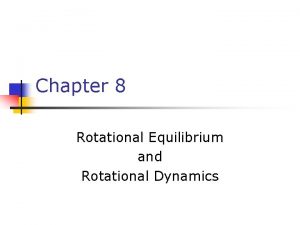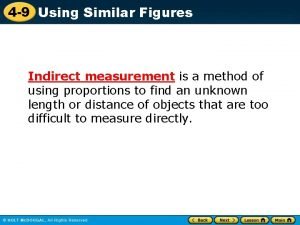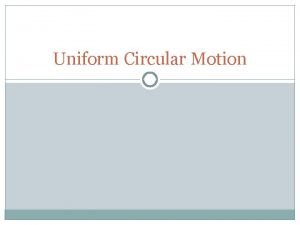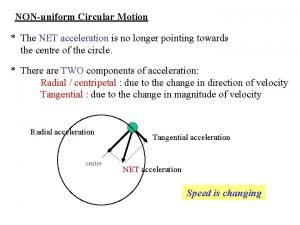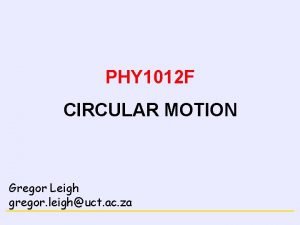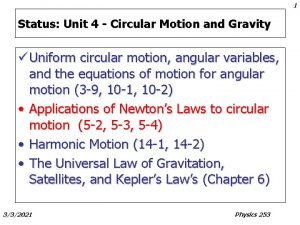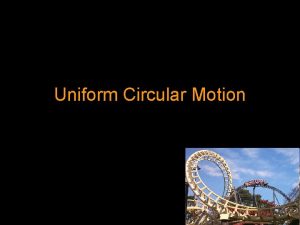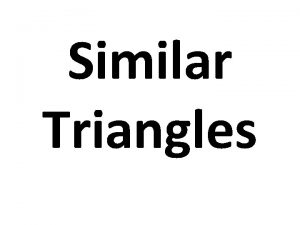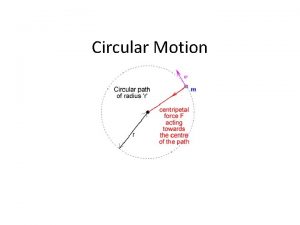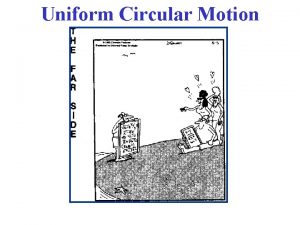Rotational Motion Uniform Circular Motion Using similar triangles








- Slides: 8

Rotational Motion

Uniform Circular Motion Using similar triangles abc def Where r is proportional to v 1 or v r Chord ab = d = v t vt 7 v ---- = ------ v Since a = d 2 r 7 v r r 2 a 7 v -----t Acceleration v The direction of the centripetal Cho acceleration is always toward the center of the circle e rd a b b r v 2 ac = ----r ac = Centripetal 2 7 v v x v ---- = ------ t 1 2 7 v Chord ab ---- = ------- v v f c

Difficult to directly measure velocity of an object moving in a circle. Useful to measure the “time for one complete revolution”. Defined as the Period (T). The distance traveled in a circle is the circumference 2 r of the circle.

Centripetal Acceleration Can now calculate the acceleration of an object moving in a circle knowing the Period and radius of the circle. ( )

Centripetal Force If an object is moving in a circular path, there must be a change in its velocity and hence an acceleration. If there is an acceleration, a force must be present to cause this acceleration. It also must be in the same direction.

Circular Motion Equations Period = The time for one revolution Sometimes useful to show the number of revolutions per time Known as frequency Frequency is the inverse of the Period Units are

Problem: A 75. 0 kg person is attached to a pole by a 5. 00 meter rope. He makes one revolution in 4. 50 seconds. Find: The speed of the person His Acceleration The Force required to keep him on his path

Problem 2: A car approaches a level, circular curve with a radius of 45. 0 m. If the concrete pavement is dry, with a coefficient of friction of 1. 20 between the rubber and concrete, what is the maximum speed at which the car can negotiate the curve at a constant speed? The car will be in uniform circular motion on the curve, so there must be a centripetal force. This force is supplied by friction, so the maximum frictional force provides the centripetal (net) force when the car is at its maximum tangential speed.
